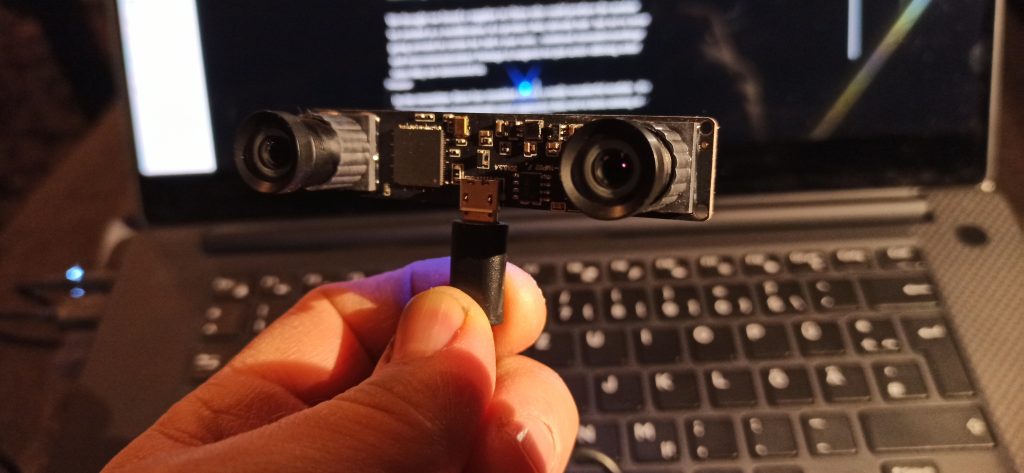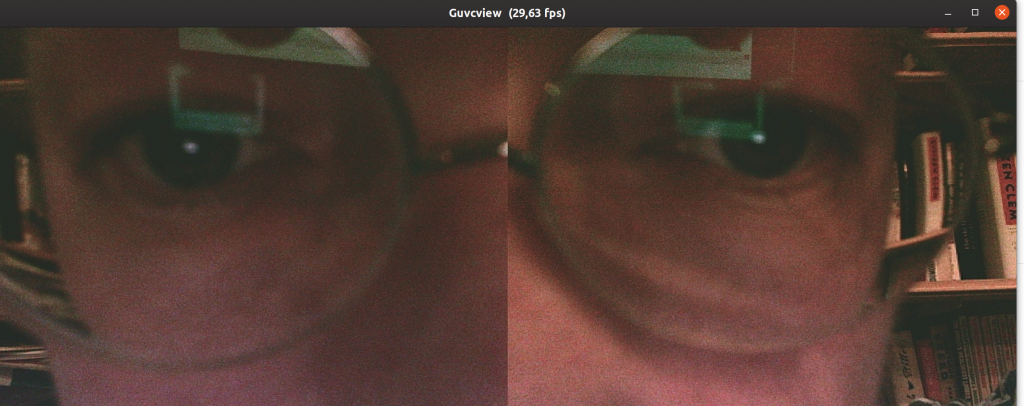Before we progress any further with the software, we need to know what’s actually happening to the eyes. This means monitoring each eye with some pupil tracking, exposing something like a set of vectors for eye movement to Unity, so that we can measure the effect of our virtual environments on eye position.
This has been a PITA. For low-cost, we need an android OTG (On The Go) UVC (Universal Video Camera) compatible camera with a 6cm focal length, and best of all, one that doesn’t need a hub (which causes all manner of issues when it comes to trying to observe both eyes simultaneously) but instead one which combines images from two cameras into a single double width image which appears to android/linux as a single camera.
We thought we found a supplier in China who could produce the module we needed as a modification of a product they already had – but we’ve been going around in circles for half a year now… continual misunderstandings and miscommunication? Perhaps (I suspect) we just aren’t offering order sizes they are interested in.
In the meantime, Rene has stumbled across a really wonderful module. It’s almost an order of magnitude more expensive than we’ve been aiming at – but at only 80EUR it’s still massively affordable.

We aren’t using it as intended of course (to create a stereoscopic image) but instead, are going to use it to simply monitor each eye simultaneously. It’s very convenient that as a stereoscopic camera it has the correct (on average) horizontal distance between cameras.

Next, Rene will start looking at how to handle the vision processing, while I try to drag the software back out of its coffin and update it to the most recent version of Unity – while implementing a few new ideas I have.
Unfortunately, it’s going to be *very* part-time for the foreseeable future, but something is happening at least.
